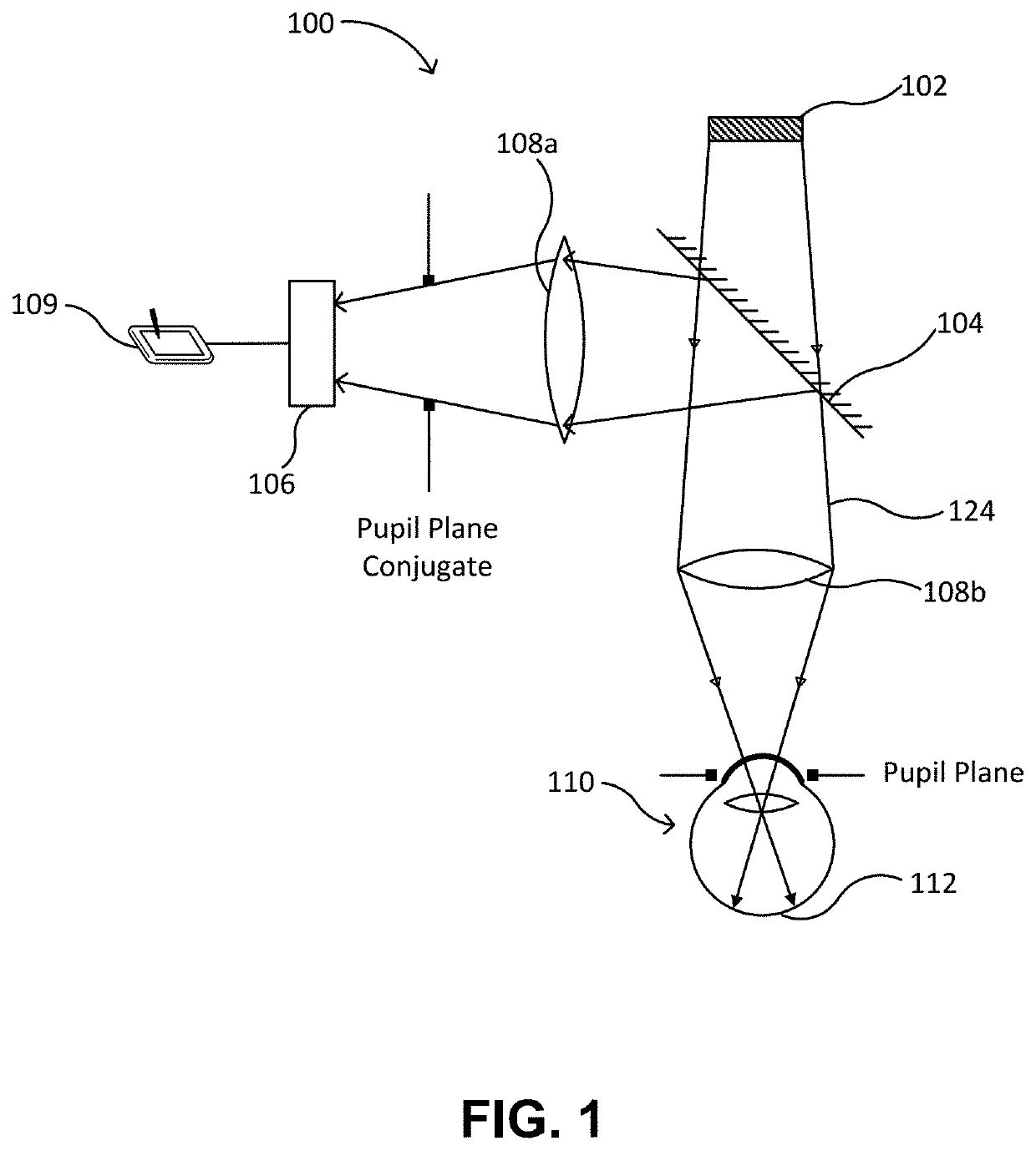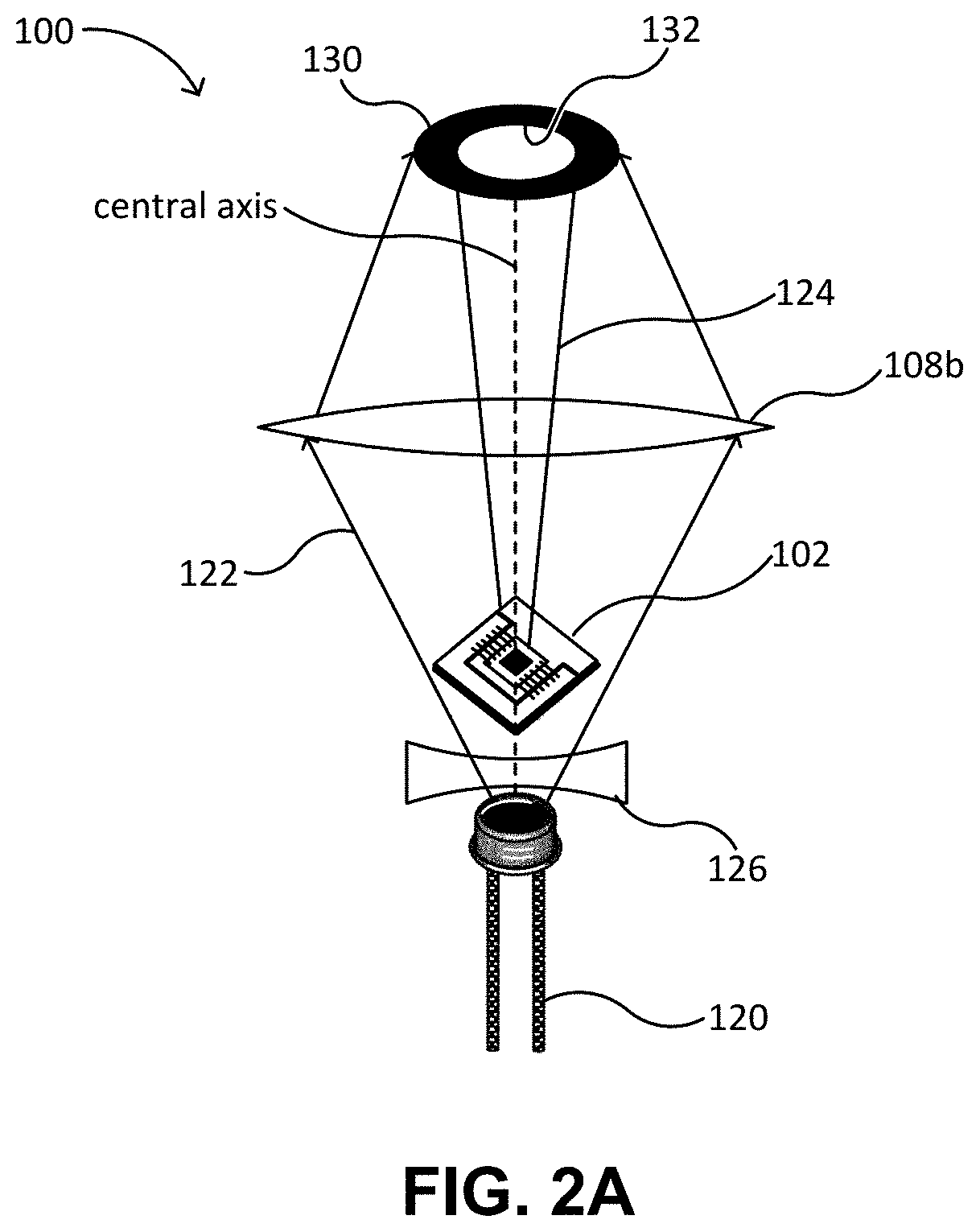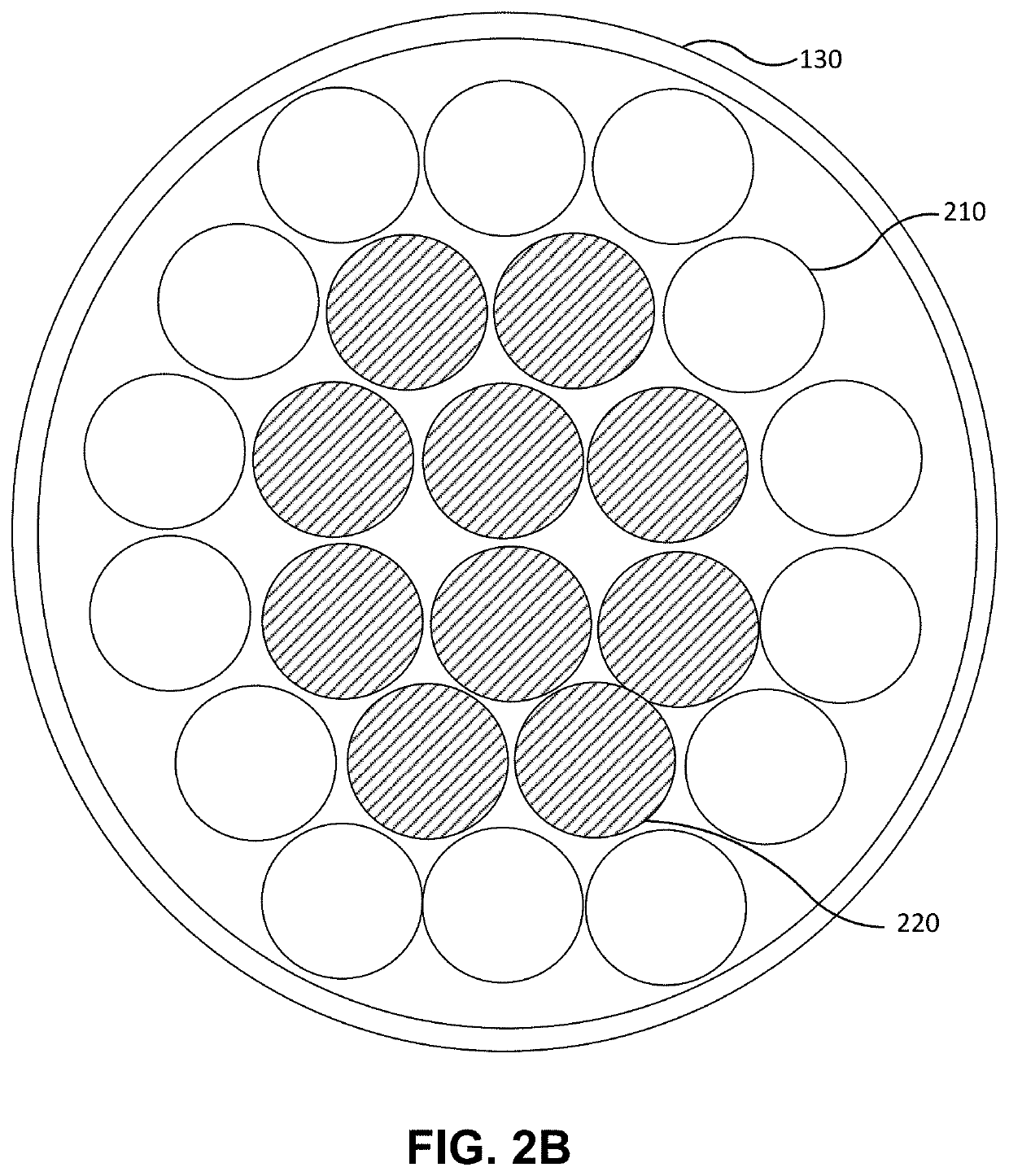Methods and systems for large spot retinal laser treatment
a retinal laser and large spot technology, applied in the field of large spot retinal laser treatment, can solve the problems of increased visual acuity loss, inability to optimally treat areas close to or with such sensitive tissue, and inability to achieve optimal laser photocoagulation solutions, so as to avoid inducing retinal photocoagulation, improve retinal pigment epithelial function, and limit temperature increase
- Summary
- Abstract
- Description
- Claims
- Application Information
AI Technical Summary
Benefits of technology
Problems solved by technology
Method used
Image
Examples
Embodiment Construction
[0031]Embodiments of the present invention described herein provide systems and methods for treating retina tissue and / or other areas of a patient's eye, in particular, large areas including the macula. Such procedures may be used to treat diabetic macular edema and / or other conditions of the eye to induce one or more therapeutic benefits. In some embodiments, a series of short duration light pulses (e.g., between 5-30 microseconds, 10-30 microseconds, or 5-15 microseconds) may be delivered to the retinal tissue with a thermal relaxation time delay between each pulse to limit the temperature rise of the target retinal tissue and thereby limit a thermal effect to only the retinal pigment epithelial layer. Short duration pulse treatments, such as MicroPulse™ Laser Therapy of systems and devices sold by IRIDEX® Corporation (hereinafter short duration pulse treatments of procedures), may not result in visible spots that appear on the retina and may result in less or no overall tissue da...
PUM
 Login to View More
Login to View More Abstract
Description
Claims
Application Information
 Login to View More
Login to View More - R&D
- Intellectual Property
- Life Sciences
- Materials
- Tech Scout
- Unparalleled Data Quality
- Higher Quality Content
- 60% Fewer Hallucinations
Browse by: Latest US Patents, China's latest patents, Technical Efficacy Thesaurus, Application Domain, Technology Topic, Popular Technical Reports.
© 2025 PatSnap. All rights reserved.Legal|Privacy policy|Modern Slavery Act Transparency Statement|Sitemap|About US| Contact US: help@patsnap.com



